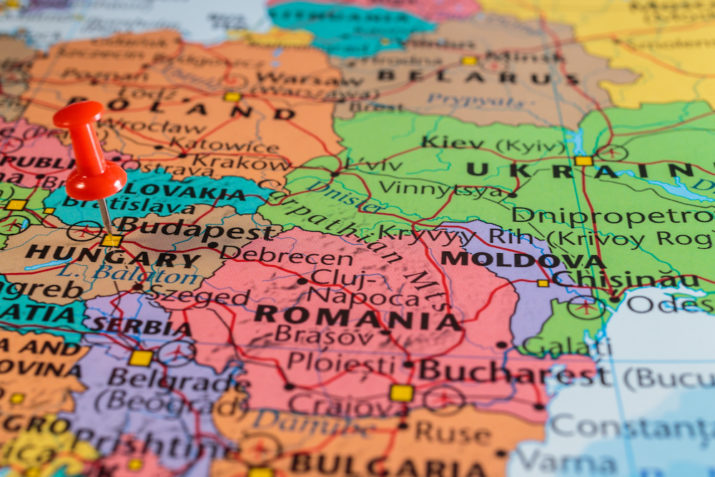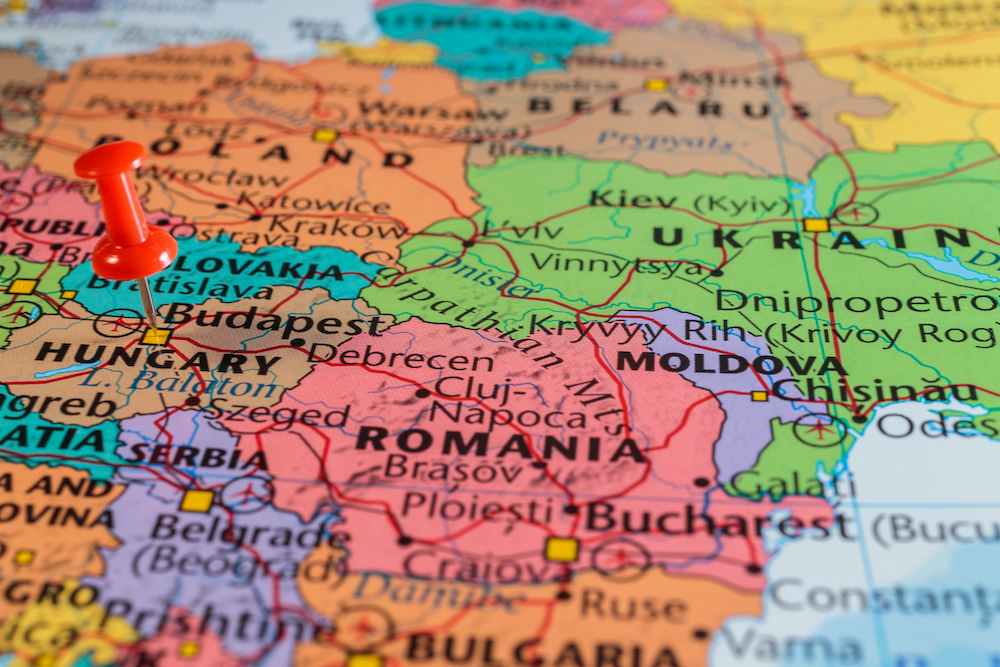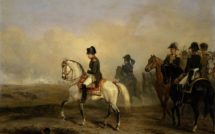
The “European Idea:” Historical Contexts, Debates, and Mental Maps on Europe as a Concept

This is part of our Campus Spotlight on Europa-Universität Viadrina.
This course is a seminar for the bachelor program “Cultural studies” of the Europe-University Viadrina
Description
Europe is not only a central reference point for cultural studies at the Europe-University Viadrina and elsewhere, but it is
also an omnipresent concept in the press and political debates. However, the extent and the manner in which Europe is used as a term with an apparently self-evident meaning has engendered a lack of critical reflection about the concept itself. The word “Europe” carries with it a varied range of historical meanings that go beyond the purely geographical dimension of a continent and have shaped―for instance through normative imaginaries of civilization, values, and history―our mental map of both the European and global space. Notwithstanding their diverse nature, these different meanings have mostly concurred to devise Europe as a positively coded, coherent spatial-cultural entity, which is equated with Western Europe and linked with ideals of freedom, democracy, and free market. Within this narrative, Asia, the Orient, barbarism, and illiberalism are characterized as non-European spaces, values, and historical experiences that define Europe by contrast.
Through the theoretical lens of conceptual history―Begriffsgeschichte―and the spatial turn, the first part of the course provides an overview of the history of Europe as a concept―in the first section―with the aim of stimulating a critical consideration of its multiple historical legacies. How did European ideas originate and in which historical constellations? Which historical actors imagined, practiced, wished for, and constructed the discourses of Europe as space? In its second section, the course analyzes other historically constructed spatial concepts such as Central Europe, Eastern Europe, and the Balkans and discusses how they relate to, compete with and/or question the overarching concept of Europe. To which extent do these spatial structures shape our mental map of Europe? In both sections, students learn to interpret historical sources from various epochs and derive the meanings of Europe directly from the texts.
Topics outline and readings
Section 1
Session 1) What is “Europe” and what does “the history of Europe” mean?
Asbach, Olaf. Europa, vom Mythos zur Imagined Community? Zur historischen Semantik “Europas“ von der Antike bis ins 17. Jahrhundert. Hannover: Wehrhahn, 2011, pp. 13–36.
Swedberg, Richard. “The Idea of “Europe” and the Origin of the European Union: A Sociological Approach.” Zeitschrift für Soziologie 23, no. 5 (1994), pp. 378–87.
Session 2) Genesis of the European idea between the fifteenth and the seventeenth century: The “Turkish threat.”
Burke, Peter. “Did Europe Exist before 1700?” History of European Ideas 1, no. 1 (1980), pp. 21–29.
Asbach, Olaf. Europa, vom Mythos zur Imagined Community? Zur historischen Semantik “Europas“ von der Antike bis ins 17. Jahrhundert. Hannover: Wehrhahn, 2011, pp. 95–108.
Session 3) Genesis of the European idea between the fifteenth and the seventeenth century: humanism and the European wars of religion.
Schmale, Wolfgang. “Das 17. Jahrhundert und die neuere europäische Geschichte.” Historische Zeitschrift, no. 264 (1997), pp. 587–611.
Asbach, Olaf. Europa, vom Mythos zur Imagined Community? Zur historischen Semantik “Europas“ von der Antike bis ins 17. Jahrhundert. Hannover: Wehrhahn, 2011, pp. 108–147.
Session 4) Europe as empire? Napoleon and the European idea.
Lützeler, Paul Michael. “‘Restauratio Imperii‘: Napoleons Rom-Fixierung im Kontext des Europa-Diskurses.” In Europa? Zur Kulturgeschichte einer Idee. Edited by Tomislav Zelic, Zeneta Sambunjak and Anita Pavić Pintarić. Würzburg: Königshausen u. Neumann, 2015, pp. 137–155.
Fontana, Biancamaria. “The Napoleonic Empire and the Europe of Nations.” In The idea of Europe: From antiquity to the European Union. Edited by Anthony Pagden. Washington, DC: Woodrow Wilson Center Press, 2006, pp. 116–128.
Session 5) Ideal Europe? The European idea of nineteenth-century intellectuals until the rise of the Paneuropean movement.
Gruner, Wolf D. “Leitbild Europa? Europaperzeptionen und Europapläne des 19. Jahrhunderts.” In Leitbild Europa? Europabilder und ihre Wirkungen in der Neuzeit. Edited by Jürgen Elvert and Jürgen Nielsen-Sikora. Historische Mitteilungen Beihefte Geschichte 74. Stuttgart: Franz Steiner, 2009, pp. 89–118.
Prettenthaler-Ziegerhofer, Anita. “Richard Nikolaus Coudenhove-Kalergi, Founder of the Pan-European Union, and the Birth of a ‘New’ Europe.” In Europe in Crisis: Intellectuals and the European Idea, 1917-1957. Edited by Mark Hewitson and Matthew D’Auria. New York: Berghahn Books, 2015, pp. 89–109.
Session 6) Illiberal Europe: Concepts of Europe in Fascist and Nazi regimes.
Gosewinkel, Dieter. “Antiliberales Europa – eine andere Integrationsgeschichte.” In “Antiliberales Europa.” Edited by Dieter Gosewinkel, Peter Schöttler and Iris Schröder. Special issue, Zeithistorische Forschungen 9, no. 3 (2012), pp. 351–364.
Sandkühler, Thomas. “Europa und der Nationalsozialismus: Ideologie, Währungspolitik, Massengewalt.” In “Antiliberales Europa.” Edited by Dieter Gosewinkel, Peter Schöttler and Iris Schröder. Special issue, Zeithistorische Forschungen 9, no. 3 (2012), pp. 428–441.
Session 7) Europe as European Union.
Ruttley, Philip. “The long road to unity: the contribution of law in the process of European integration since 1945.” In The idea of Europe: From antiquity to the European Union. Edited by Anthony Pagden. Washington, DC: Woodrow Wilson Center Press, 2006, pp. 228–259.
Büssgen, Antje. “Europa nach den Nationen? Das europäische Projekt im Zeitalter von Postdemokratie und Globalisierung. Zu Robert Menasses Analys der europäischen Integration in seinem Essay “Der europäische Landbote”.” In Europa? Zur Kulturgeschichte einer Idee. Edited by Tomislav Zelic, Zeneta Sambunjak and Anita Pavić Pintarić. Würzburg: Königshausen u. Neumann, 2015, pp. 297–326.
Session 8) The colonial origin of Europe.
Klose, Fabian. “Europe as a Colonial Project: A Critique of its Anti-Liberalism.” In Anti-Liberal Europe: A Neglected Story of Europeanization. Edited by Dieter Gosewinkel. New York: Berghahn Books, 2015, pp. 47–71.
Wagner, Florian. “Von der kolonialpraktischen Kooperation zum “europäischen Ideal”? Kolonialverbände in Deutschland, Frankreich, Spanien und Belgien (1870–1914).” In Europabilder im 20. Jahrhundert: Entstehung an der Peripherie. Edited by Frank Bösch, Ariane Brill and Florian Greiner. Göttingen: Wallstein-Verl., 2012, pp. 27–53.
Section 2
Session 9) Europa as constructed space: The delimitation from Asia, the location of Russia and the “Eurasia” concept.
Parker, W. H. “Europe: How Far?” The Geographical Journal 126, no. 3 (1960), pp. 278–97.
Lemberg, Hans. “Zur Entstehung des Osteuropabegriffs im 19. Jahrhundert Vom “Norden” zum “Osten“ Europas.” Jahrbücher für Geschichte Osteuropas 33, no. 1 (1985), pp. 48–91.
Bassin, Marc. “Eurasia.” In European Regions and Boundaries: A Conceptual History. Edited by Diana Miškova and Balázs Trencsényi, 210–32. European conceptual history. Nex York, Oxford: Berghahn, 2017.
Session 10) Hierarchical geographies of Europe: “Eastern Europe” and “Balkan” as the Other.
Schenk, Frithjof Benjamin. “Mental maps: Die Konstruktion von geographischen Räumen in Europa seit der Aufklärung.” Geschichte und Gesellschaft 28 (2002), pp. 493–514.
Todorova, Maria. “Historische Vermächtnisse als Analysekategorie: Der Fall Südosteuropa.” In Europa und die Grenzen im Kopf. Edited by Karl Kaser, Dagmar Gramshammer-Hohl and Robert Pichler. Klagenfurt: Wieser, 2003, pp. 227–252.
Wolff, Larry. “Die Erfindung Osteuropas: Von Voltaire zu Voldemort.” In Europa und die Grenzen im Kopf. Edited by Karl Kaser, Dagmar Gramshammer-Hohl and Robert Pichler. Klagenfurt: Wieser, 2003, pp. 21–34.
Session 11) Does Europe have a core? The Mitteleuropa debate.
Höhne, Steffen. “Rückkehr nach Europa: Alte und neue Mitteleuropadiskurse.” In Europas Mitte Mitte Europas: Europa als kulturelle Konstruktion. Edited by Kathrin Pöge-Alder and Christel Köhle-Hetzinger. Jena, 2008, pp. 76–97.
Miller, Aleksej. “Die Erfindung der Konzepte Mittel- und Osteuropa.” In Europa und die Grenzen im Kopf. Edited by Karl Kaser, Dagmar Gramshammer-Hohl and Robert Pichler. Klagenfurt: Wieser, 2003, pp. 139–163.
Session 12) Europe and the South: The idea of “Southern Europe” and the plans for “Eurafrica.”
Franzinetti, Guido. “Southern Europe.” In European Regions and Boundaries: A Conceptual History. Edited by Diana Miškova and Balázs Trencsényi. Nex York, Oxford: Berghahn, 2017, pp. 100–121.
Hansen, Peo, and Stefan Jonsson. Eurafrica: The Untold History of European Integration and Colonialism. London: Bloomsbury, 2015.
Clara Frysztacka is research assistant at the European-University Viadrina in Frankfurt Oder. She studied modern and contemporary history as well as Eastern European Studies in Milan and Berlin. Her PhD at the University of Siegen focused on the category of historical time and on the forms of temporal self-location of Polish society in modernity at the end of the long nineteenth century. At the European-University Viadrina, she teaches and does research in critical European studies.
Photo: Eastern Europe | Shutterstock
Published on June 3, 2020.




